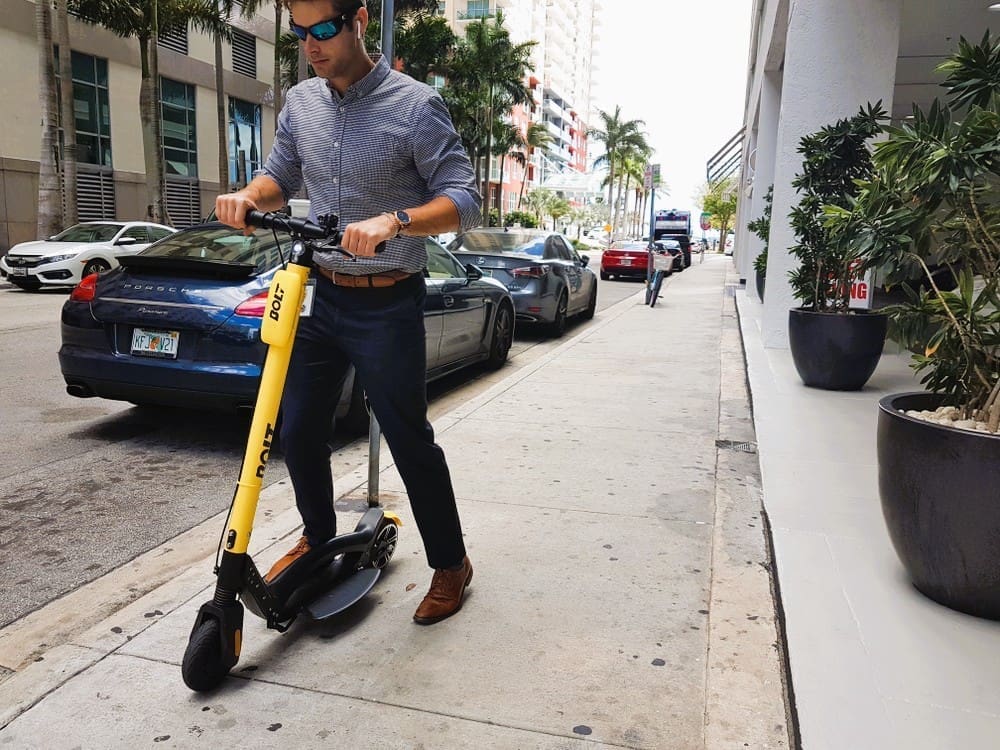Electric scooters are zipping through Miami streets faster than ever, transforming how the city gets around. With over 1.6 million rides recorded since the city’s pilot program began, their popularity is undeniable—but so are the risks. As more riders embrace this eco-friendly trend, understanding Miami’s unique scooter laws and safety rules is critical. Before you hit the road, let’s dive into the key tips, stats, and regulations you need to stay safe and legal.
Growth Trends
Electric scooters are reshaping Miami’s transportation scene, offering an affordable, eco-friendly, and efficient way to navigate the city. For locals, scooters simplify short commutes, bypassing traffic congestion and reducing the hassle of parking in crowded areas. For tourists, they provide a fun, scenic way to explore iconic neighborhoods like Wynwood and Brickell. Add Miami’s warm climate and scenic waterfronts into the mix, and it’s no wonder e-scooters have become a go-to option for quick trips.
Since Miami rolled out its e-scooter pilot program, on an average day, the city saw nearly 7,000 rides according to the program study, proving just how quickly e-scooters became part of the urban landscape. Major players like Lime, Bird, and Spin dominate the streets, offering user-friendly apps that allow riders to locate, unlock, and ride scooters with ease. Even rideshare giants like Uber and Lyft have integrated scooter rentals into their platforms, giving users more transportation flexibility. Statewide, cities like Tampa and Orlando are following suit, launching similar initiatives to meet the growing demand for micro-mobility solutions.
Miami’s infrastructure has adapted to support the rise of scooters, with designated parking areas, expanded bike lanes, and improved connectivity to public transit hubs. Streets like Biscayne Boulevard and key downtown areas now feature clearer paths for riders, ensuring smoother integration with other traffic. These scooters are also solving the notorious “last mile” problem, helping commuters seamlessly get from transit stops to workplaces or homes.
Despite their benefits, scooters in Miami aren’t without challenges. Riders often navigate congested streets, tourist-heavy zones, and strict rules prohibiting sidewalk use. Safety concerns, parking clutter, and inconsistent rider compliance have sparked debates about their long-term impact.
Electric Scooter Laws In Florida
These issues underscore the importance of understanding Miami’s scooter laws and Florida’s broader regulations, ensuring that this innovative mode of transport remains both safe and sustainable for everyone. Whether you’re a first-time rider or a seasoned commuter, being aware of age requirements, helmet rules, and operational guidelines can help you navigate the streets responsibly and avoid injuries caused by accidents and costly penalties.
Age Restrictions and Licensing Requirements
Florida law requires riders to be at least 16 years old to operate an electric scooter, as outlined in Florida Statutes. Unlike motor vehicles, electric scooters do not require a driver’s license, making them an accessible option for many. However, the law assumes that riders are familiar with basic traffic regulations, placing the onus on them to ride responsibly.
Helmet Laws and Safety Gear
In Florida, if you’re under 16 and riding a motorized vehicle—yep, that includes electric scooters—a helmet isn’t optional, it’s the law. If you’re older, you can technically ride without one, but let’s be real—it’s a smart move to wear one, especially in busy areas like Downtown Miami and Brickell.
For nighttime riding, Florida law requires scooters to have a white front light visible from 500 feet and a red rear light visible from 600 feet to enhance visibility and safety. Following these regulations helps reduce the risk of accidents and ensures a safer ride.
Speed Limits and Where You Can Ride
In Florida, electric scooters are allowed in bike lanes, shared-use paths, and streets where the speed limit is 30 mph or lower, but riding on sidewalks is strictly prohibited. Miami reinforces these rules with local ordinances, designating specific areas for scooter use and parking to keep high-traffic areas like Wynwood and Coconut Grove organized.
Riders still have to follow the rules of the road—yield to pedestrians, stop at traffic lights, and ride responsibly. To make things safer, cities like Miami have been adding more bike lanes and running safety campaigns, helping scooter riders get around more easily while keeping the streets safer for everyone.
E-Scooter Safety Driving in Miami
Riding an electric scooter in Miami is exciting, but safety should always come first.
Recommended Safety Gear for Miami E-Scooter Riders
Staying safe starts with the right gear. A properly fitted helmet is your best protection—even if you’re over 16 and not legally required to wear one. Wearing reflective clothing or accessories makes you more visible, especially at night, while gloves and sturdy shoes give you better grip and control. And if you’re riding in busy areas like Downtown Miami or Brickell, knee and elbow pads can add an extra layer of protection in case of a fall.
Emergency Procedures: What to Do in an Accident
Even the safest riders can get into accidents. If you’re involved in a collision, your first priority is staying safe—call emergency services right away. Take photos of the scene, exchange information with anyone involved, and get checked out by a doctor, even if your injuries seem minor. In Florida, Personal Injury Protection (PIP) may cover medical costs, but navigating claims can be tricky. A Miami personal injury lawyer who knows scooter laws can help you understand your rights and fight for the compensation you deserve.
Navigating Florida’s Roads and Paths Safely
Riding a scooter in Miami means adapting to the city’s unique traffic patterns. Stick to bike lanes whenever possible and avoid weaving through cars, especially on busy streets like Biscayne Boulevard. Ride predictably, signal your turns clearly, and always yield to pedestrians. Watch out for common road hazards such as potholes, debris, or wet surfaces, especially during Miami’s frequent rain showers.
Plan your route ahead of time to stick to well-maintained bike paths and avoid high-speed roads or pedestrian-heavy areas like Miami Beach during peak hours. Always use your scooter’s lights at night, and enhance your visibility with reflective gear. By staying alert, riding responsibly, and preparing for emergencies, you can enjoy the convenience of e-scooters while staying safe on Miami’s roads.







